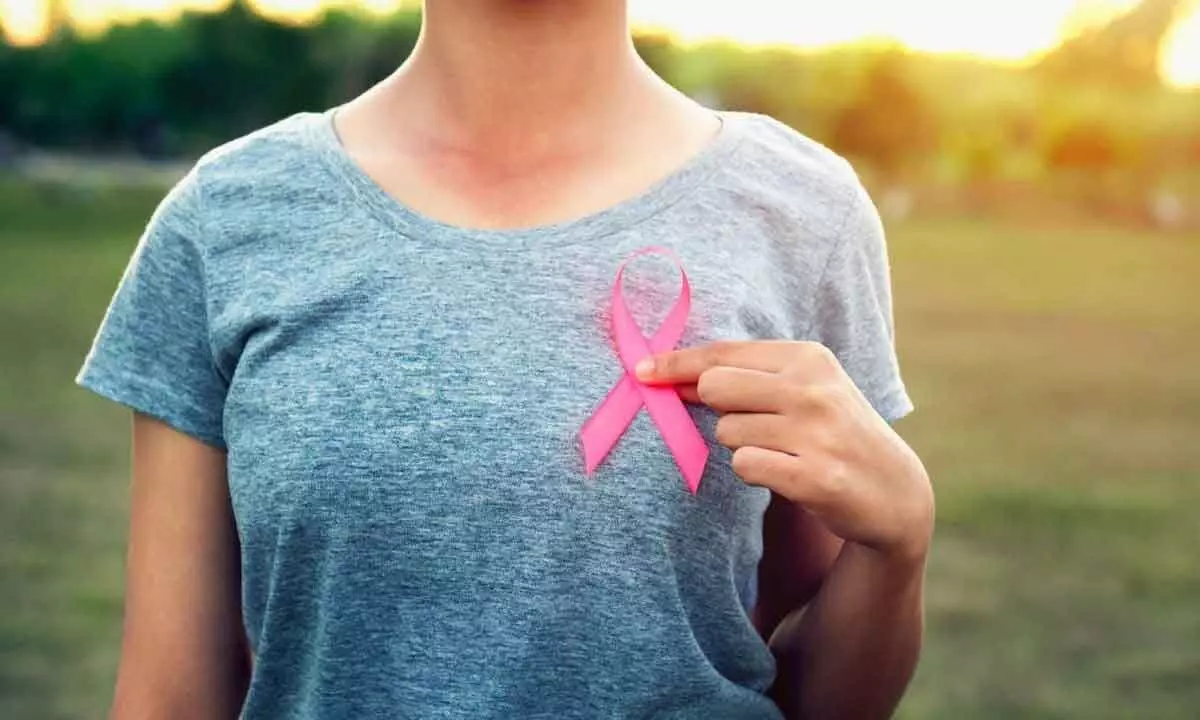Hina Khan’s Stage 3 Breast Cancer Diagnosis: Key Insights on Risk Factors and Early Detection

Actress Hina Khan reveals her stage 3 breast cancer diagnosis. Experts discuss risk factors, including genetics and lifestyle, and stress the importance of early detection.
Genetic, environmental, and lifestyle factors are driving breast cancers even among women who seem healthy, said oncologists, even as television actress Hina Khan announced her diagnosis with stage three breast cancer.
Known to be a fitness enthusiast, the ‘Yeh Rishta Kya Kehlata Hai’ actress in an Instagram post said: “I have been diagnosed with Stage Three Breast Cancer”.
Noting that she is “doing well”, the actress stated that her “treatment has already begun, and I am ready to do everything necessary to emerge from this even stronger”.
“Stage 3 breast cancer is when the breast cancer either involves the skin or the underlying structures which we call the chest wall or the tumour are very big more than 5 cm in size or there are lymph nodes which are even seen in the neck,” Dr. Rohan Khandelwal, lead consultant and Head of the Breast Centre at CK Birla Hospital, Gurugram, told IANS.
The doctor recommended women with Stage 3 breast cancer a whole body scan or a PET scan to see whether the disease has not spread to any other part of the body.
Breast cancer is the most common type of cancer affecting women worldwide. Data from the Indian Council of Medical Research (ICMR) showed that breast cancer is the most common cancer in India. It accounts for 28.2 per cent of all female cancers, with an estimated 216,108 cases by 2022.
Globally, there were 2.3 million women diagnosed with breast cancer and 670,000 died in 2022, as per the World Health Organization (WHO).
“Breast cancer can develop even in people who appear healthy because of the intricate interaction between hereditary and environmental variables. These variables may occasionally result in epigenetic modifications or mutations in genes that raise the risk of cancer,” Dr. Rohan said.
He explained that cells in healthy persons are equipped with internal systems that guard against abnormal growth and repair damage to DNA. These can, however, occasionally fail allowing harmed cells to multiply and perhaps develop into malignant ones.
“In addition, healthy people can also be impacted by some risk factors, such as radiation, hormone exposure, and specific genetic abnormalities. For example, despite leading a healthy lifestyle, someone with a genetic mutation like BRCA1/2 or a family history of breast cancer may still acquire breast cancer,” the doctor said.
Dr. Pritam Kataria, Consultant, Medical Oncology, Sir HN Reliance Foundation Hospital, told IANS that as breast cancer cases are increasing, the age group is not well defined, and the risk can range from the young to middle-aged and elderly.
The doctor noted that major non-modifiable risk factors include higher age and hereditary status, which means, you are predisposed to breast cancer if there is a family history with mutations present in your DNA, like the BRCA and BRCA2 mutations. Early menage and late menopause also pose a higher risk.
On the other hand, modifiable risk factors include obesity, having no children or advanced maternity, smoking, and alcohol, he added. The doctor also pointed out the role of increasing air pollution as a risk factor.
The experts called for early diagnosis via mammograms, which should be done every year beginning at age 40 or earlier for high-risk patients.
For those with a high risk, such as those with BRCA1 or BRCA2 gene mutations, breast MRI is recommended.
Women with thick breast tissue or abnormalities discovered on mammograms can both be investigated with ultrasound. Regular self-examinations and clinical breast exams by doctors help in the detection of unexpected changes.
A healthy lifestyle that includes eating a balanced diet, getting regular exercise, abstaining from alcohol, and quitting smoking can also help keep the risk at bay.















